Strukturwandel und Produktivität
Die Abteilung Strukturwandel und Produktivität untersucht Prozesse strukturellen Wandels, die beispielsweise durch die Dekarbonisierung der Wirtschaft oder technologische Neuerungen ausgelöst werden können. Struktureller Wandel beeinflusst die Allokation ökonomischer Ressourcen und prägt somit maßgeblich die langfristige Entwicklung einer Volkswirtschaft. Er führt zu Aufschwung und Niedergang von Regionen, Wirtschaftszweigen und Betrieben und hat direkte Auswirkungen auf den Arbeitsmarkt und die Produktivität der Unternehmen. Wir analysieren die Auswirkungen strukturellen Wandels empirisch mit Hilfe mikroökonometrischer Methoden. Zudem betreibt die Abteilung die IWH-Insolvenzforschung.
Im Fokus unserer Arbeit stehen Produktivität, Unternehmensdynamik und Arbeitsmarktergebnisse wie zum Beispiel Beschäftigung und Lohnniveau. Ein besonderes Augenmerk liegt auf der Rolle von Marktmacht auf Produkt- und Arbeitsmärkten. Die Abteilung erforscht gemeinsam mit dem Gewinner des Max-Planck-Humboldt-Forschungspreises von 2019, Professor Ufuk Akcigit (Chicago), die Ursachen der ökonomischen Unterschiede zwischen Ost- und Westdeutschland. Diese wissenschaftlich und wirtschaftspolitisch relevanten Forschungsfragen werden durch die Abteilung im Forschungscluster "Wirtschaftliche Dynamik und Stabilität" sowie im Forschungscluster "Produktivität und Institutionen" analysiert.
Ihr Kontakt

- Abteilung Strukturwandel und Produktivität
Referierte Publikationen
Ausgewählte Publikationen

Industry Mix, Local Labor Markets, and the Incidence of Trade Shocks
in: Journal of Labor Economics, Nr. 3, 2024
Abstract
<p>We analyze how skill transferability and the local industry mix affect the adjustment costs of workers hit by a trade shock. Using German administrative data and novel measures of economic distance we construct an index of labor market absorptiveness that captures the degree to which workers from a particular industry are able to reallocate into other jobs. Among manufacturing workers, we find that the earnings loss associated with increased import exposure is much higher for those who live in the least absorptive regions. We conclude that the local industry composition plays an important role in the adjustment processes of workers.</p>
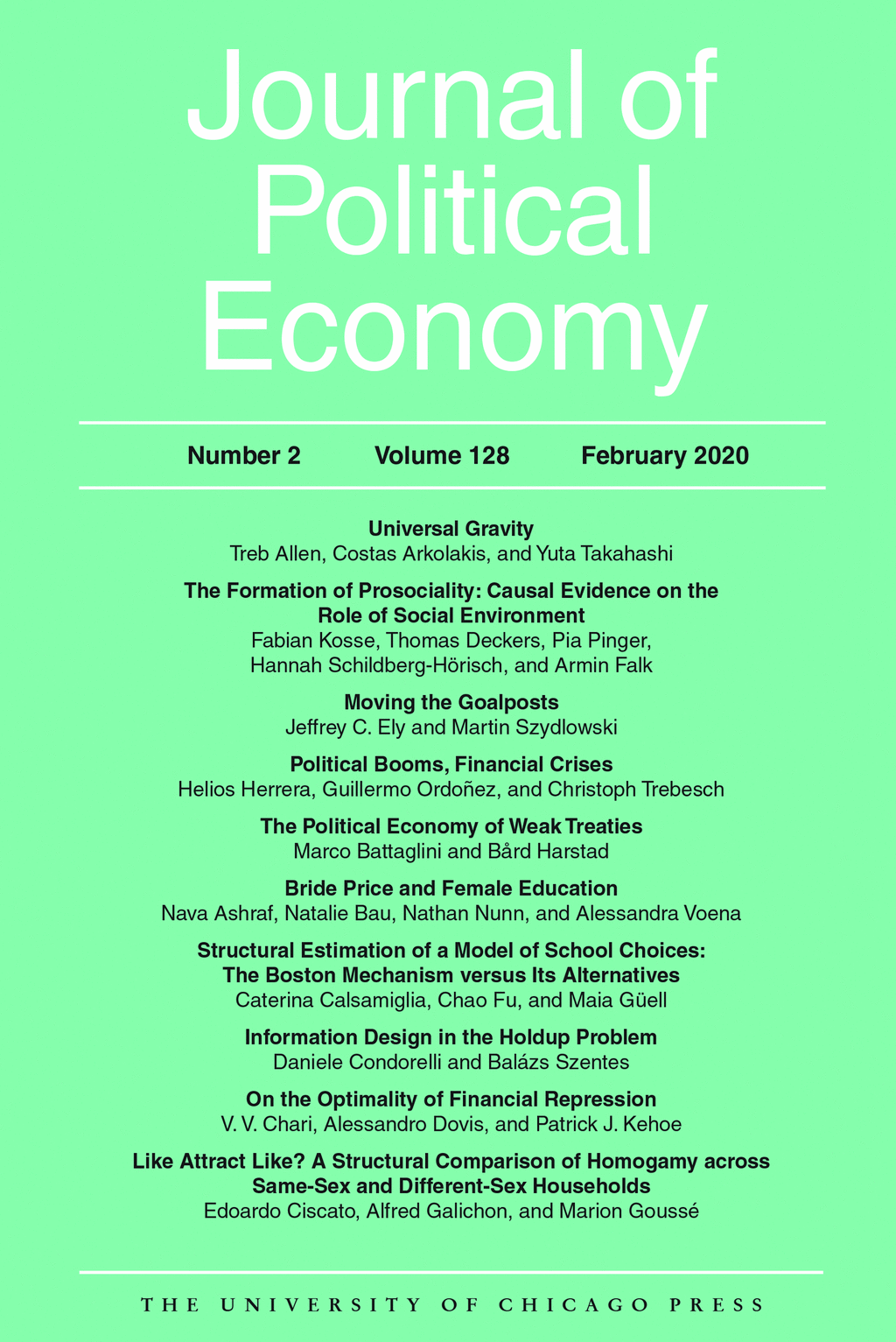
Can Mentoring Alleviate Family Disadvantage in Adolescence? A Field Experiment to Improve Labor-Market Prospects
in: Journal of Political Economy, Nr. 3, 2024
Abstract
<p>We study a mentoring program that aims to improve the labor-market prospects of school-attending adolescents from disadvantaged families by offering them a university-student mentor. Our RCT investigates program effectiveness on three outcome dimensions that are highly predictive of later labor-market success: math grades, patience/social skills, and labor-market orientation. For low-SES adolescents, the mentoring increases a combined index of the outcomes by over half a standard deviation after one year, with significant increases in each dimension. Part of the treatment effect is mediated by establishing mentors as attachment figures who provide guidance for the future. Effects on grades and labor-market orientation, but not on patience/social skills, persist three years after program start. By that time, the mentoring also improves early realizations of school-to-work transitions for low-SES adolescents. The mentoring is not effective for higher-SES adolescents. The results show that substituting lacking family support by other adults can help disadvantaged children at adolescent age.</p>
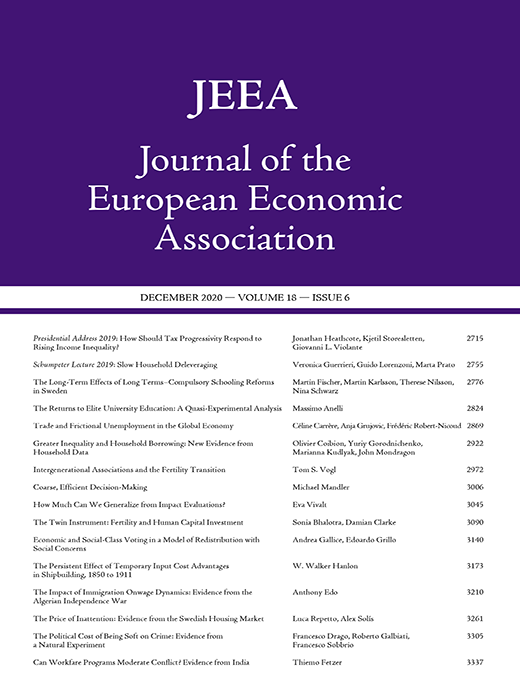
European Firm Concentration and Aggregate Productivity
in: Journal of the European Economic Association, Nr. 2, 2023
Abstract
This paper derives a European Herfindahl–Hirschman concentration index from 15 micro-aggregated country datasets. In the last decade, European concentration rose due to a reallocation of economic activity toward large and concentrated industries. Over the same period, productivity gains from an increasing allocative efficiency of the European market accounted for 50% of European productivity growth while markups stayed constant. Using country-industry variation, we show that changes in concentration are positively associated with changes in productivity and allocative efficiency. This holds across most sectors and countries and supports the notion that rising concentration in Europe reflects a more efficient market environment rather than weak competition and rising market power.
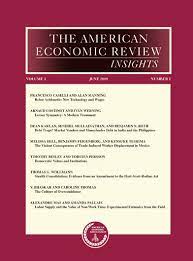
Immigration and Entrepreneurship in the United States
in: American Economic Review: Insights, Nr. 1, 2022
Abstract
Immigration can expand labor supply and create greater competition for native-born workers. But immigrants may also start new firms, expanding labor demand. This paper uses U.S. administrative data and other data resources to study the role of immigrants in entrepreneurship. We ask how often immigrants start companies, how many jobs these firms create, and how these firms compare with those founded by U.S.-born individuals. A simple model provides a measurement framework for addressing the dual roles of immigrants as founders and workers. The findings suggest that immigrants act more as "job creators" than "job takers" and that non-U.S. born founders play outsized roles in U.S. high-growth entrepreneurship

The Place-based Effects of Police Stations on Crime: Evidence from Station Closures
in: Journal of Public Economics, March 2022
Abstract
Many countries consolidate their police forces by closing down local police stations. Police stations represent an important and visible aspect of the organization of police forces. We provide novel evidence on the effect of centralizing police offices through the closure of local police stations on crime outcomes. Combining matching with a difference-in-differences specification, we find an increase in reported car theft and burglary in residential properties. Our results are consistent with a negative shift in perceived detection risks and are driven by heterogeneous station characteristics. We can rule out alternative explanations such as incapacitation, crime displacement, and changes in police employment or strategies at the regional level. We argue that criminals are less deterred due to a lower visibility of the local police.
Arbeitspapiere
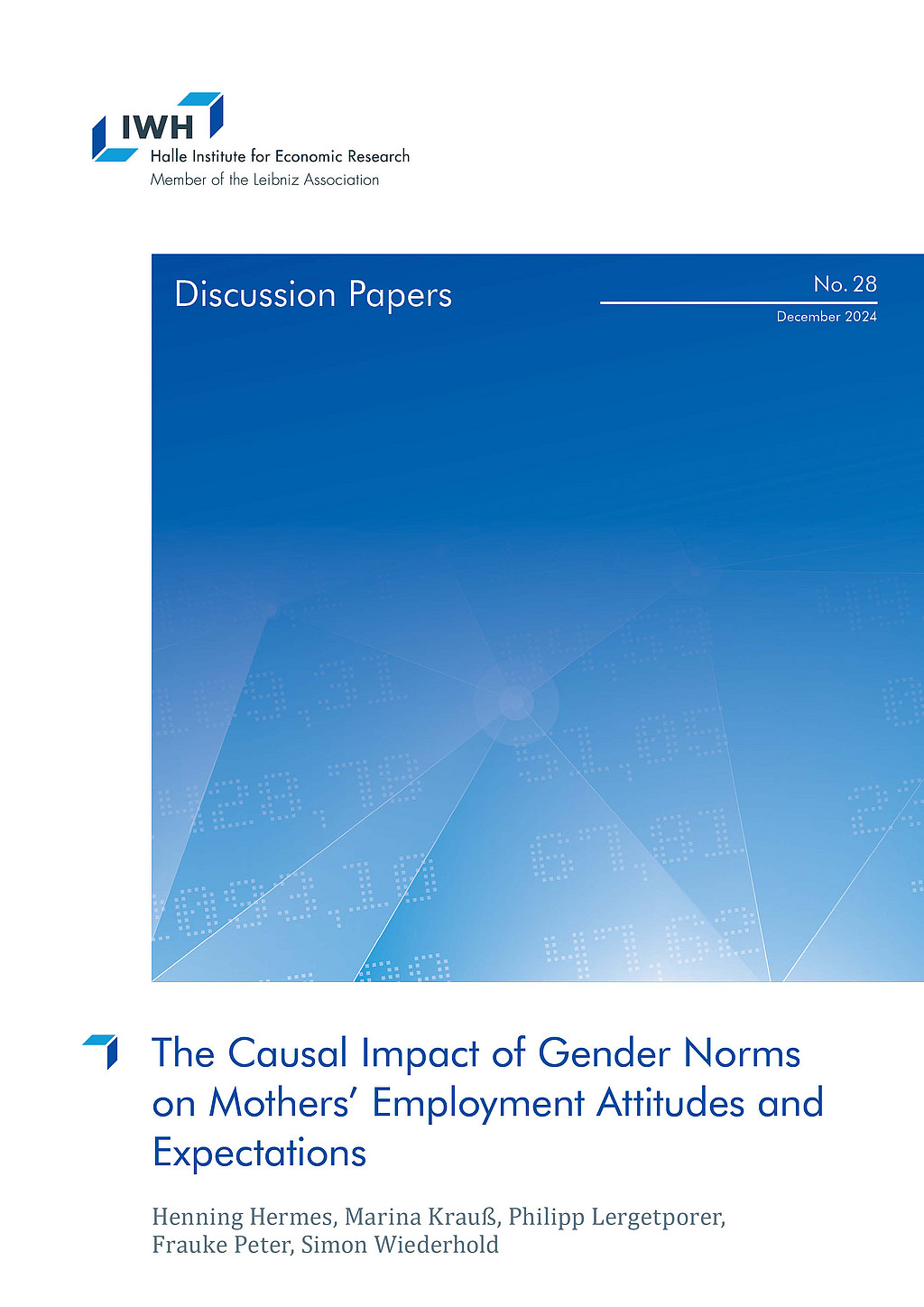
The Causal Impact of Gender Norms on Mothers’ Employment Attitudes and Expectations
in: IWH Discussion Papers, Nr. 28, 2024
Abstract
<p>This field experiment investigates the causal impact of mothers’ perceptions of gender norms on their employment attitudes and labor-supply expectations. We provide mothers of young children in Germany with information about the prevailing gender norm regarding maternal employment in their city. At baseline, over 70% of mothers incorrectly perceive this gender norm as too conservative. Our randomized treatment improves the accuracy of these perceptions, significantly reducing the share of mothers who misperceive gender norms as overly conservative. The treatment also shifts mothers’ own labor-market attitudes towards being more liberal – and we show that specifically the shifted attitude is a strong predictor of mothers’ future labor-market participation. Consistently, treated mothers are significantly more likely to plan an increase in their working hours one year ahead.</p>
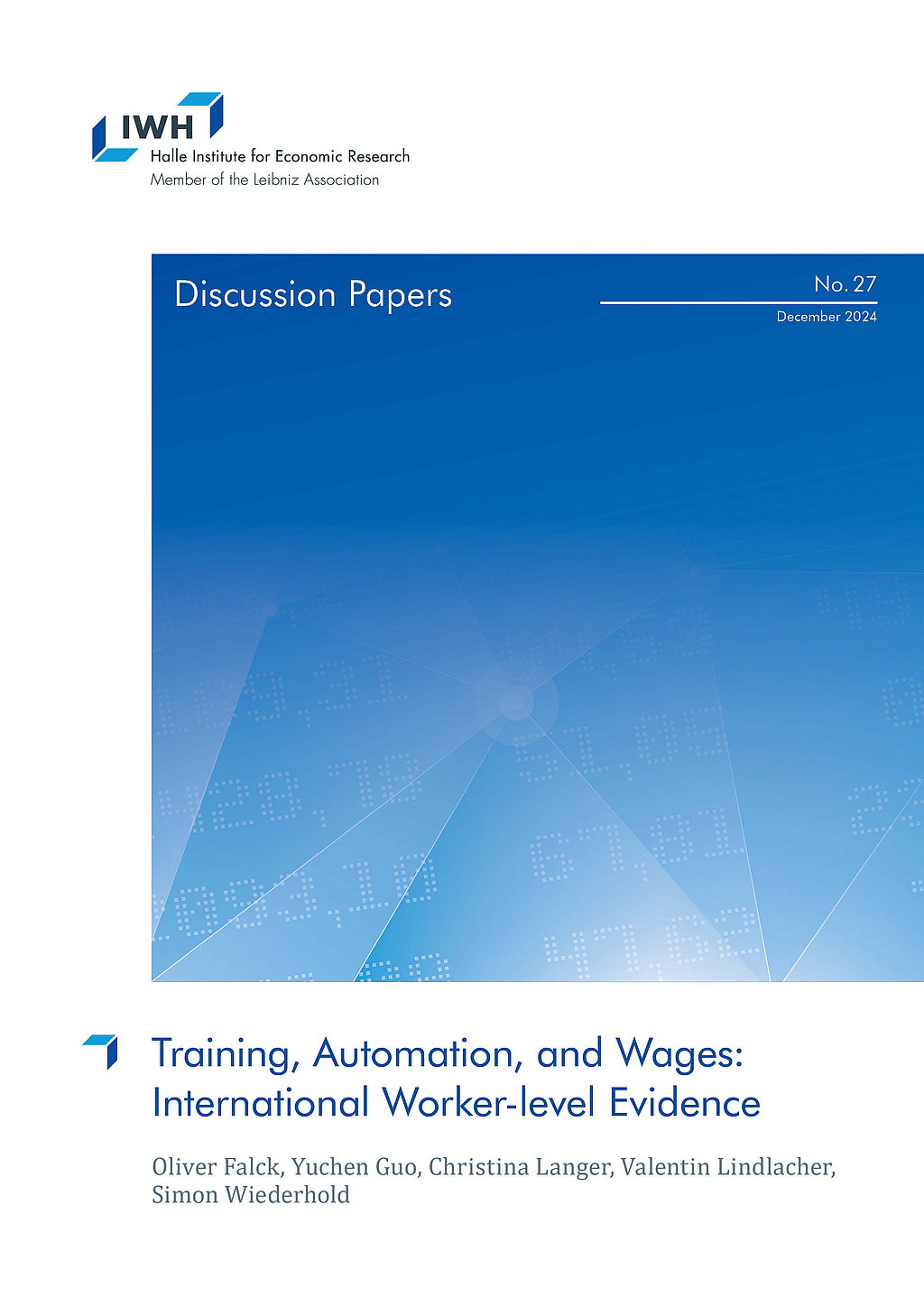
Training, Automation, and Wages: International Worker-level Evidence
in: IWH Discussion Papers, Nr. 27, 2024
Abstract
<p>Job training is widely regarded as crucial for protecting workers from automation, yet there is a lack of empirical evidence to support this belief. Using internationally harmonized data from over 90,000 workers across 37 industrialized countries, we construct an individual-level measure of automation risk based on tasks performed at work. Our analysis reveals substantial within-occupation variation in automation risk, overlooked by existing occupation-level measures. To assess whether job training mitigates automation risk, we exploit within-occupation and within-industry variation. Additionally, we employ entropy balancing to re-weight workers without job training based on a rich set of background characteristics, including tested numeracy skills as a proxy for unobserved ability. We find that job training reduces workers’ automation risk by 4.7 percentage points, equivalent to 10 percent of the average automation risk. The training-induced reduction in automation risk accounts for one-fifth of the wage returns to job training. Job training is effective in reducing automation risk and increasing wages across nearly all countries, underscoring the external validity of our findings. Women tend to benefit more from training than men, with the advantage becoming particularly pronounced at older ages.</p>
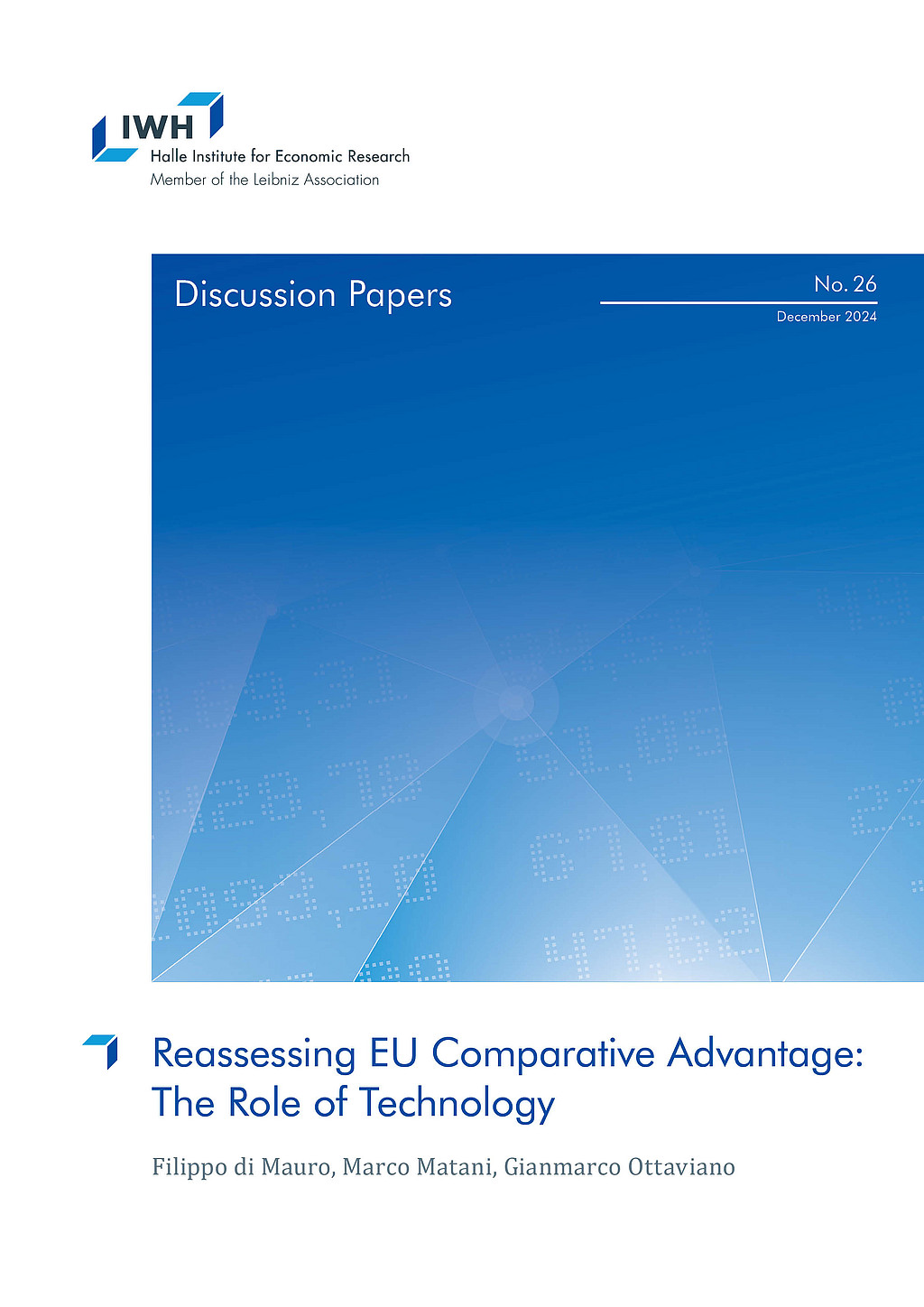
Reassessing EU Comparative Advantage: The Role of Technology
in: IWH Discussion Papers, Nr. 26, 2024
Abstract
<p>Based on the sufficient statistics approach developed by Huang and Ottaviano (2024), we show how the state of technology of European industries relative to the rest of the world can be empirically assessed in a way that is simple in terms of computation, parsimonious in terms of data requirements, but still comprehensive in terms of information. The lack of systematic cross-industry correlation between export specialization and technological advantage suggests that standard measures of revealed comparative advantage only imperfectly capture a country’s technological prowess due to the concurrent influences of factor prices, market size, markups, firm selection and market share reallocation.</p>
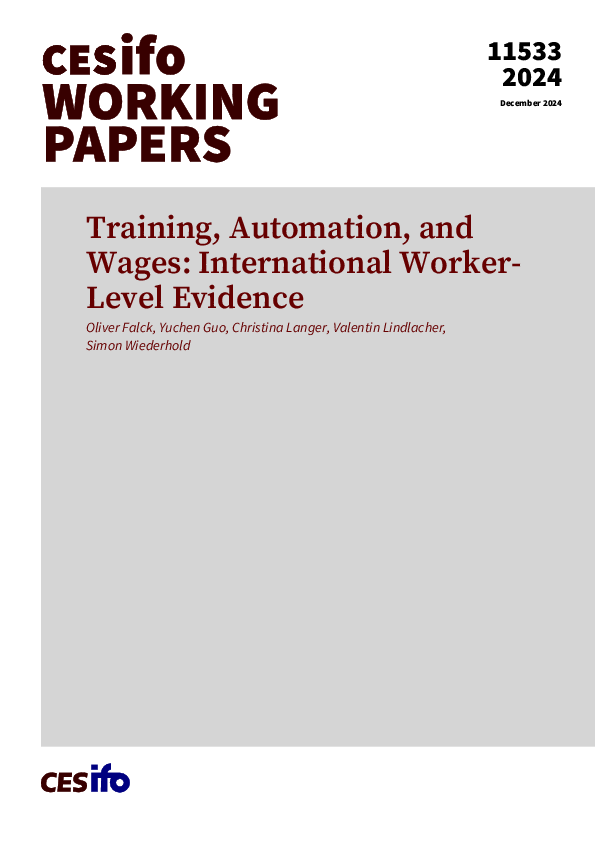
Training, Automation, and Wages: International Worker-level Evidence
in: CESifo Working Papers, Nr. 11533, 2024
Abstract
<p>Job training is widely regarded as crucial for protecting workers from automation, yet there is a lack of empirical evidence to support this belief. Using internationally harmonized data from over 90,000 workers across 37 industrialized countries, we construct an individual-level measure of automation risk based on tasks performed at work. Our analysis reveals substantial within-occupation variation in automation risk, overlooked by existing occupation-level measures. To assess whether job training mitigates automation risk, we exploit within-occupation and within-industry variation. Additionally, we employ entropy balancing to re-weight workers without job training based on a rich set of background characteristics, including tested numeracy skills as a proxy for unobserved ability. We find that job training reduces workers’ automation risk by 4.7 percentage points, equivalent to 10 percent of the average automation risk. The training-induced reduction in automation risk accounts for one-fifth of the wage returns to job training. Job training is effective in reducing automation risk and increasing wages across nearly all countries, underscoring the external validity of our findings. Women tend to benefit more from training than men, with the advantage becoming particularly pronounced at older ages.</p>
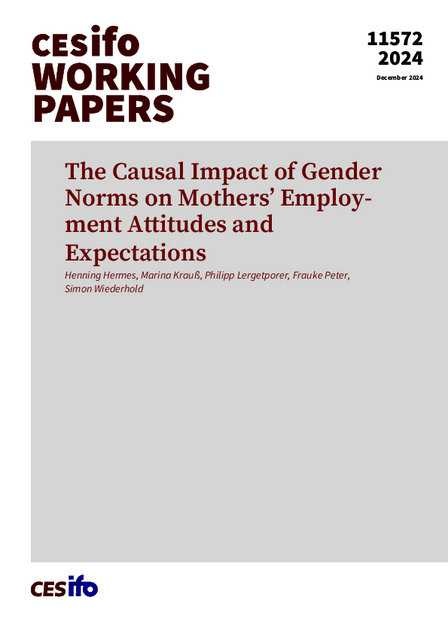
The Causal Impact of Gender Norms on Mothers’ Employment Attitudes and Expectations
in: CESifo Working Papers, Nr. 11572, 2024
Abstract
<p>This field experiment investigates the causal impact of mothers’ perceptions of gender norms on their employment attitudes and labor-supply expectations. We provide mothers of young children in Germany with information about the prevailing gender norm regarding maternal employment in their city. At baseline, over 70% of mothers incorrectly perceive this gender norm as too conservative. Our randomized treatment improves the accuracy of these perceptions, significantly reducing the share of mothers who misperceive gender norms as overly conservative. The treatment also shifts mothers’ own labor-market attitudes towards being more liberal – and we show that specifically the shifted attitude is a strong predictor of mothers’ future labor-market participation. Consistently, treated mothers are significantly more likely to plan an increase in their working hours one year ahead.</p>
































